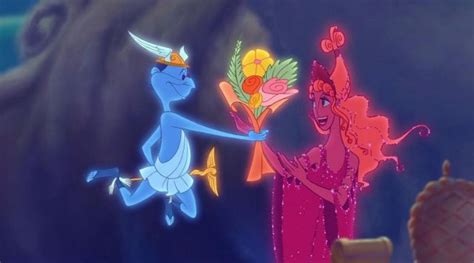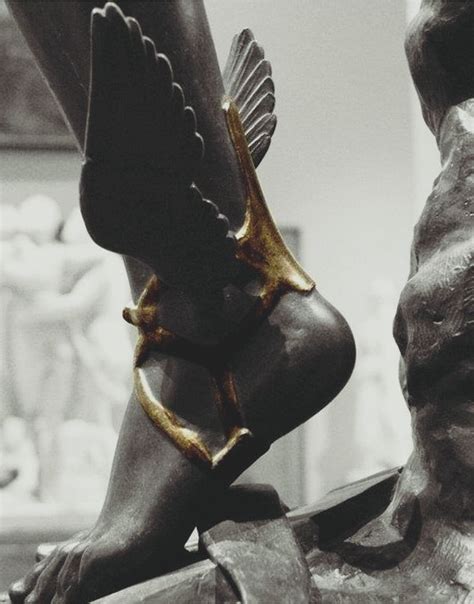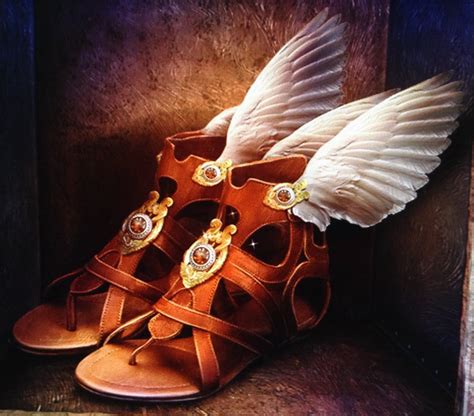hermes shoes wings | Hermes winged sandals greek mythology hermes shoes wings The Talaria of Mercury (Latin: tālāria) or The Winged Sandals of Hermes (Ancient Greek: πτηνοπέδῑλος, ptēnopédilos or πτερόεντα πέδιλα, pteróenta pédila) are winged sandals, a symbol of the Greek messenger god Hermes (Roman equivalent Mercury). They were said to be made by the god Hephaestus of . See more Own a Chanel, Hermès or Louis Vuitton handbag? Charles Gorra, luxury shopping expert and CEO of Rebag, shares which designer handbags are actually worth the investment — and the ones you may .
0 · winged sandals worn by Hermes
1 · winged sandals greek mythology website
2 · who gave Hermes winged shoes
3 · what were Hermes boots called
4 · shoes with wings greek mythology
5 · Hermes winged sandals greek mythology
6 · Hermes shoes greek mythology
7 · Hermes flying shoes percy jackson
Le proviseur adjoint – Vice Principal. Levels of Schooling. L’école – School. L’école public – Public school. L’école privée – Private school. L’école de langue – Language school. L’école maternelle – Preschool. L’école primaire – Primary school. Le collège – Middle school. Le lycée – High school. L’université / la fac – College.
The Talaria of Mercury (Latin: tālāria) or The Winged Sandals of Hermes (Ancient Greek: πτηνοπέδῑλος, ptēnopédilos or πτερόεντα πέδιλα, pteróenta pédila) are winged sandals, a symbol of the Greek messenger god Hermes (Roman equivalent Mercury). They were said to be made by the god Hephaestus of . See more
The Latin noun tālāria, neuter plural of tālāris signifies "of the ankle". It is not quite certain how the Romans arrived at the meaning of . See more
winged sandals worn by Hermes
winged sandals greek mythology website
In Rick Riordan's Percy Jackson & the Olympians series, the talaria is a pair of sneakers worn by Grover Underwood.In See more• Media related to Talaria at Wikimedia Commons See moreIn ancient Greek literature, the sandals of Hermes are first of all mentioned by Homer (ἀμβρόσια χρύσεια; ambrósia khrýseia, . See more• EADS Talarion an unmanned air vehicle named after talaria.• Hermes also wears a winged petasos, a traveler hat. In other representations he wears a winged helmet.• Caduceus, the staff of Hermes See more
In the Odyssey, Homer does indeed say that the sandals are golden and composed partly of ambrosia, but, as noted both by Wikipedia, and by William Smith's 1870 . While his footwear was certainly a part of his image in the art of ancient Greece, the wings were surprisingly not his chief attribute. In addition .The Talaria of Mercury (Latin: tālāria) or The Winged Sandals of Hermes (Ancient Greek: πτηνοπέδῑλος, ptēnopédilos or πτερόεντα πέδιλα, pteróenta pédila) are winged sandals, a symbol of the Greek messenger god Hermes (Roman equivalent Mercury).In Greek mythology, talaria (from Latin: talaria, neuter plural of talaris, meaning "of the ankle"), winged heel-straps or sandals are one of the attributes of Hermes. Talaria are attested as early as Homer, who refers to them as ἀμϐρόσια χρύσεια / ambrósia khrúseia ("immortal/divine and .
In the Odyssey, Homer does indeed say that the sandals are golden and composed partly of ambrosia, but, as noted both by Wikipedia, and by William Smith's 1870 Dictionary of Greek and Roman Biography and Mythology, "Homer no where says or suggests that they were provided with wings." Artwork often depicts these shoes had wings on them to allow the messenger to move more swiftly when carrying out his duties. Sometimes the god’s wide-brimmed hat was also adorned with wings. The sandals and hat became instantly identifiable emblems of Hermes. While his footwear was certainly a part of his image in the art of ancient Greece, the wings were surprisingly not his chief attribute. In addition to his wings, Hermes had many other symbols that tied him to his role as both a messenger and a shepherd. His distinctive hat and symbolic animal, a lamb, referred to his role as a pastoral god.
Hermes makes an appearance in the myths of two most popular Greek heroes; Perseus and Odysseus. Hermes appearance was portrayed through his use of a large staff, his winged shoes, and his large, straw-brimmed hat. Hermes, the Greek god of commerce, communication, and travelers, is often depicted wearing winged sandals. These sandals are an iconic symbol of his power and speed. But why did Hermes wear these unique shoes? Let’s take a closer look. The Origins of Hermes In ancient Greek art, Hermes is frequently depicted wearing winged sandals. These sandals are often shown with small wings attached to the ankles or heels of his shoes. The wings are typically depicted with feathers and appear to be functional rather than decorative.
A detail of a marble statue of Hermes showing one of the messenger god 's winged sandals. 19th century CE plaster cast from the 1st century BCE bronze original. (Archaeological Museum, Pavia, Italy) Hermes, the Greek god of commerce, messenger of the gods and protector of travelers, is often depicted with wings on his feet. But what exactly did Hermes have on his feet? The Winged Sandals of Hermes According to Greek mythology, Hermes wore a pair of winged sandals that allowed him to fly and move quickly.The Talaria of Mercury (Latin: tālāria) or The Winged Sandals of Hermes (Ancient Greek: πτηνοπέδῑλος, ptēnopédilos or πτερόεντα πέδιλα, pteróenta pédila) are winged sandals, a symbol of the Greek messenger god Hermes (Roman equivalent Mercury).In Greek mythology, talaria (from Latin: talaria, neuter plural of talaris, meaning "of the ankle"), winged heel-straps or sandals are one of the attributes of Hermes. Talaria are attested as early as Homer, who refers to them as ἀμϐρόσια χρύσεια / ambrósia khrúseia ("immortal/divine and .
who gave Hermes winged shoes
In the Odyssey, Homer does indeed say that the sandals are golden and composed partly of ambrosia, but, as noted both by Wikipedia, and by William Smith's 1870 Dictionary of Greek and Roman Biography and Mythology, "Homer no where says or suggests that they were provided with wings." Artwork often depicts these shoes had wings on them to allow the messenger to move more swiftly when carrying out his duties. Sometimes the god’s wide-brimmed hat was also adorned with wings. The sandals and hat became instantly identifiable emblems of Hermes. While his footwear was certainly a part of his image in the art of ancient Greece, the wings were surprisingly not his chief attribute. In addition to his wings, Hermes had many other symbols that tied him to his role as both a messenger and a shepherd. His distinctive hat and symbolic animal, a lamb, referred to his role as a pastoral god. Hermes makes an appearance in the myths of two most popular Greek heroes; Perseus and Odysseus. Hermes appearance was portrayed through his use of a large staff, his winged shoes, and his large, straw-brimmed hat.
Hermes, the Greek god of commerce, communication, and travelers, is often depicted wearing winged sandals. These sandals are an iconic symbol of his power and speed. But why did Hermes wear these unique shoes? Let’s take a closer look. The Origins of Hermes In ancient Greek art, Hermes is frequently depicted wearing winged sandals. These sandals are often shown with small wings attached to the ankles or heels of his shoes. The wings are typically depicted with feathers and appear to be functional rather than decorative.
A detail of a marble statue of Hermes showing one of the messenger god 's winged sandals. 19th century CE plaster cast from the 1st century BCE bronze original. (Archaeological Museum, Pavia, Italy)


what were Hermes boots called

shoes with wings greek mythology
Hermes winged sandals greek mythology
Hermes shoes greek mythology
Float CTD Boost-Valve Remote Highlights: • Intended for XC, Trail and AM use. • CTD ( Climb, Trail, Descend) low-speed compression options are preset at the factory. • Cable -operated.
hermes shoes wings|Hermes winged sandals greek mythology

























